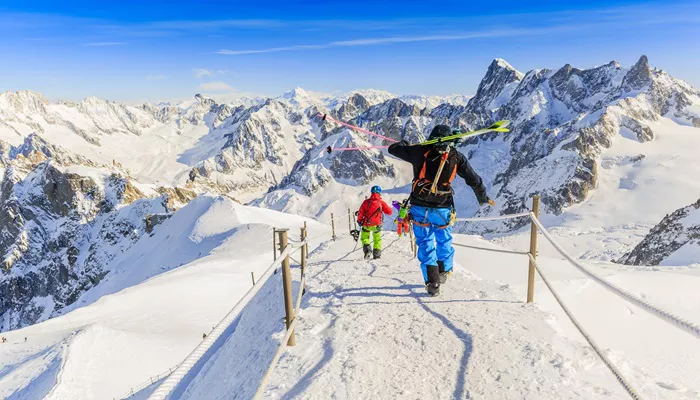Skiing in 50-degree weather presents unique challenges compared to the typical cold, snowy conditions associated with the sport. Warm temperatures mean you need to carefully balance comfort, breathability, and protection while avoiding overheating. Choosing the right ski attire for these conditions ensures that you stay dry, comfortable, and able to enjoy your time on the slopes.
Understanding Skiing in Warm Weather
Skiing in 50-degree weather usually occurs in late spring, during specialized events, or at lower elevations where snow remains but temperatures rise significantly. While the snow may still be decent in the morning, afternoon conditions can become slushy or wet, requiring a different approach to your gear.
Challenges of Warm-Weather Skiing
Overheating: Wearing too many layers can lead to excessive sweating, making you uncomfortable.
Wet Conditions: Melting snow increases moisture levels, which can soak through clothing if not properly managed.
Sun Exposure: The combination of high-altitude sun and reflected UV rays from the snow can cause sunburn and dehydration.
Layering for 50-Degree Skiing
Even in warm weather, layering is essential for maintaining comfort and regulating body temperature. However, you’ll want to adjust your layers to be much lighter than those for traditional winter skiing.
Base Layer – Moisture-Wicking Fabric
Your base layer should be lightweight and moisture-wicking to prevent sweat buildup.
Best materials:
- Merino wool
- Polyester
- Nylon
Avoid: Cotton, as it retains moisture and can make you feel damp.
Mid Layer – Lightweight Insulation (Optional)
In 50-degree weather, a mid-layer is often unnecessary, but if you tend to get cold easily, opt for a thin fleece or a lightweight synthetic insulated layer.
Recommended options:
- A light fleece hoodie or vest
- A thin down or synthetic jacket (only for early morning skiing)
- Outer Layer – Breathable, Waterproof Shell
A light, waterproof shell protects against wet conditions without adding too much insulation. A softshell jacket or a windproof vest can be great options to keep your upper body comfortable.
Ideal outerwear choices:
- Softshell ski jackets
- Windproof vests
- Light waterproof shell (if precipitation is expected)
Choosing the Right Ski Pants
Your lower body also needs careful attention when dressing for 50-degree skiing. Wearing traditional insulated ski pants might be too warm, so opting for a breathable, water-resistant pair is a better choice.
Best Ski Pants for Warm Weather
Softshell pants: Lightweight and breathable, these pants allow better temperature control.
Shell pants: Waterproof without insulation, offering protection against slushy conditions.
Insulated pants (not recommended): These may be too warm, leading to excessive sweating.
Ventilation Features Matter
Look for pants with zippered vents, especially along the inner or outer thighs, to allow airflow and prevent overheating.
Footwear and Socks for Warm Skiing Conditions
Your feet play a crucial role in maintaining overall comfort while skiing. Overheating or moisture buildup can lead to discomfort and even blisters.
Lightweight Ski Socks
Wear thin, moisture-wicking socks instead of thick wool socks. The right socks will keep your feet dry without overheating.
Best materials:
- Merino wool (lightweight)
- Synthetic blends (polyester, nylon)
Avoid: Cotton socks, as they absorb moisture and increase the risk of blisters.
Ski Boots Adjustments
Since warm temperatures make ski boots feel tighter due to foot swelling, loosen your buckles slightly for better circulation and comfort.
Accessories for Warm-Weather Skiing
Accessories can make or break your skiing experience in warm temperatures. Choosing the right ones ensures you remain comfortable without unnecessary bulk.
Goggles with Proper Lens Tint
Bright, sunny conditions require low-light or high-visibility lenses to reduce glare from the sun reflecting off the snow. Opt for:
- Yellow, rose, or blue-tinted lenses for overcast conditions
- Polarized or mirrored lenses for bright sunlight
- Sunscreen and UV Protection
Since the sun’s reflection off the snow intensifies UV exposure, apply broad-spectrum SPF 30+ sunscreen to your face and any exposed skin.
Additional UV protection:
- Wear a lightweight buff or neck gaiter
- Use UV-protective lip balm
- Wear sunglasses with UV protection if not using goggles
Gloves or No Gloves?
In 50-degree weather, light gloves or liners are usually enough. Insulated ski gloves may be too warm.
Recommended choices:
- Softshell or thin fleece gloves
- Glove liners if you want extra protection without overheating
Managing Body Temperature While Skiing
Even with the perfect outfit, managing your body temperature throughout the day ensures you remain comfortable.
Use Vents and Zippers
Many jackets and pants come with built-in ventilation zippers. Open them during high-exertion activities and close them when resting.
Take Breaks in the Shade
If you feel overheated, stop in a shaded area for a few minutes to cool down before continuing.
Stay Hydrated
Dehydration happens quickly in warm temperatures, especially at high altitudes. Drink plenty of water throughout the day.
Conclusion
Dressing for skiing in 50-degree weather requires a strategic approach that balances breathability, moisture management, and sun protection. A light base layer, breathable outerwear, softshell or shell ski pants, thin socks, and UV protection will keep you comfortable while adapting to changing snow conditions.
By selecting the right gear and adjusting as needed, you can enjoy a fantastic day of skiing without overheating or feeling unprepared. Always check the weather forecast before hitting the slopes to ensure you’re dressed appropriately for the conditions.

